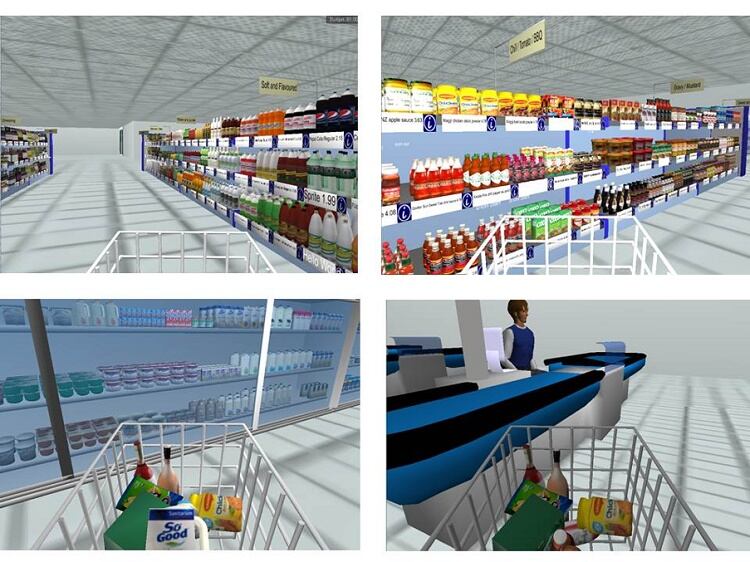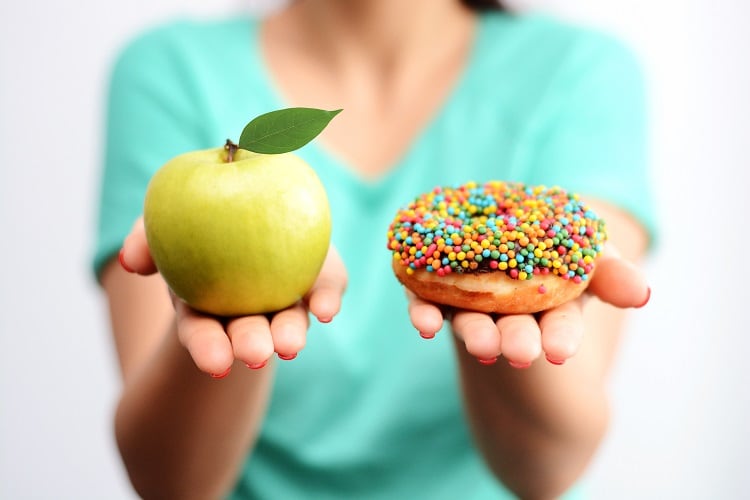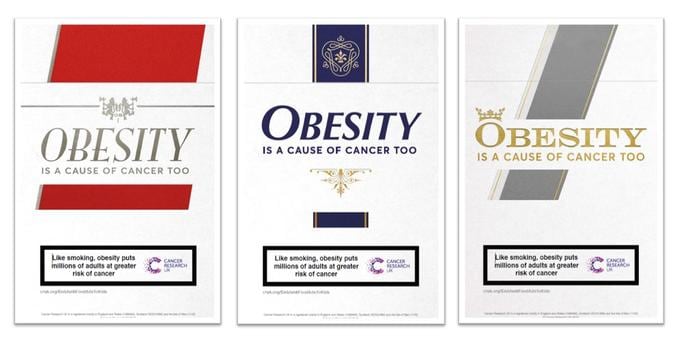The world is experiencing an obesity epidemic – or as the World Health Organization (WHO) terms it: ‘globesity’.
According to latest data from the WHO, the Food and Agriculture Organization (FAO), the World Food Programme (WFP) and others, overweight and obesity continue to increase in all regions.
In their latest State of the Food Security and Nutrition in the World report, jointly prepared by the International Fund for Agriculture Development (IFAD) and the UN Children’s Fund (UNICEF), the UN agencies found that rising obesity and overweight rates were particularly prevalent among school-age children and adults.
“The most recent data show that obesity is contributing to four million deaths globally and is increasing the risk of morbidity for people in all age groups,” noted the coalition chiefs.
The research also links national income, food insecurity, and obesity. For example, in upper-, middle- and high-income countries, living in a food-insecure household is a predictor of obesity, the authors write.
Such associations can be explained by a number of factors, they continued, including the higher cost of nutritious foods, and the lower cost of their ‘unhealthy’ counterparts – often high in fat, sugar and salt.
Conversely, the UN agencies estimate 820m people did not have enough to eat in 2018 – a figure that is up from 811m in 2017.
Fighting obesity with policy
In the report, the coalition called for multifaceted approaches to halt and reverse the obesity epidemic. “Our actions to tackle these troubling trends will have to be bolder, not only in scale but also in terms of multisectoral collaboration,” the group noted.
“Policies to…increase the availability and affordability of nutritious foods that constitute a healthy diet are required, along with measures to create healthier food environments and limit consumption of harmful fats, salt and sugars.”
'Globesity': The facts
- No region is exempt from the epidemic of overweight and obesity.
- The increase in prevalence of obesity between 2000 and 2016 has been even faster than that of overweight.
- Overweight prevalence increases over the life course and is highest in adulthood:
- 40m pre-school children (5.9%) are overweight
- 131m (20.6%) school-age children are overweight
- 207m (17.3%) adolescents are overweight
- 2bn (38.9%) adults are overweight
One way of approaching nutrition policy is to implement ‘ingredient taxes’ – a surcharge applied to food and drink products that contain an elevated amount of a particular ingredient, such as fat, salt or sugar. The aim is to reduce consumption of these items.
To date, sugar taxes appear to have received the most attention. In Europe, 11 nations have adopted some form of sugar or health tax, including the UK, Ireland, Portugal and France.
Junk food taxes are another way that governments are trying to lower consumption of ‘unhealthy’ foods. Mexico and Hungary have both adopted forms of this legislation.
Another way of ‘increasing the affordability’ of nutritious foods is through government subsidisation of ‘healthy’ foods – such as fruit and vegetables.

According to a WHO spokesperson, the UN agency supports certain food taxes aimed at improving public health. “WHO considers the taxation of sugar sweetened beverages a cost effective intervention for the prevention of noncommunicable diseases,” the spokesperson told FoodNavigator.
“We are currently studying other forms of taxation or subsidies to understand their potential impact and benefits.”
But in practice, do these policies work? A group of researchers from New Zealand's Universities of Auckland and Otago are looking to determine just that. Their study, published in The Lancet this week, aimed to measure the effect of food price variations – impacted by simulated food taxes and subsidies – on consumer purchasing.
Simulated shopping in a virtual supermarket
In the study, 1,132 adults in New Zealand completed up to five weekly shops in a realistic, virtual supermarket. The three-dimensional computer simulation ‘mirrored’ the in-store environment of a local supermarket brand.
Every time a participant ‘went shopping’, they were randomly allocated any one of six pricing options:
- No change in prices;
- A fruit and vegetable subsidy (20%);
- A sweetened beverage tax (20% or 40%);
- A saturated fat tax (NZ$2 per 100g or $4 per 100g saturated fat);
- A salt tax ($0.02 per 100mg or $0.04 per 100mg sodium); or
- A sugar tax ($0.40 per 100g or $1.80 per 100g sugar).
Of the 4258 shops included in the analysis, 645 were ‘control’ shops – where no prices were changed – and 2,545 shops where one policy was activated. Two or more policies were activated for 1,058 shops.

So do ingredient taxes work? And what about ‘healthy food’ subsidies?
The researchers measured the ‘healthiness’ of the total shopping basket for each weekly shop according to the percentage of total food items defined as healthy.
Where prices were not changed, 67.9% of food purchases were classified as healthy.
The saturated fat, sugar, and salt taxes proved an effective strategy in improving this proportion by a ‘small, but significant’ amount, according to the researchers.
“We found that the sugar tax, salt tax and saturated fat (SAFA) tax were all effective in increasing the overall healthiness of the shopping basket,” principal investigator Wilma Waterlander told FoodNavigator. “Also, these taxes lead to important reductions in the targeted nutrients (e.g. the SAFA tax led to 132g less SAFA purchased compared to control.”
However, neither the sweetened beverage tax nor the fruit and vegetable subsidy resulted in significant increase in ‘healthiness’.
“The fruit and vegetable subsidy was effective in increasing fruit and vegetable purchases (0.33kg per household per week more in intervention group compared to control); but wasn’t effective in increasing the overall healthiness of the shopping basket,” said Waterlander. “This is because we observed some important substitution effects,” she continued.
Food taxes and subsidies ‘warrant serious consideration’
The researchers therefore believe that a combination of different taxes and subsidy policies might be the ‘most effective’ way of improving diets and overall health.

“The evidence on food taxes and subsidies to date was mostly limited to effects of the policy on the targeted nutrient instead of total diet. Our study shows that food taxes and subsidies are effective in changing the purchases of the targeted nutrients (as expected), but also have some important substitution effects,” Waterlander told this publication.
“We found that the policies that target a broad range of products (e.g., a sugar, salt or SAFA tax) are effective to improve the healthiness of the total shopping basket.
“In view of these findings, we recommend policymakers seriously consider options for a combined junk food tax, perhaps accompanied by a fruit and vegetable subsidy.”
However, the lead author made clear that taxes and subsidies provide ‘no silver bullet’.
“Ideally, we’d change the entire food system, so that we grow, produce, process and market food in a healthier and more sustainable way. Right now, more than 70 percent of packaged foods in New Zealand supermarkets is unhealthy, and often this food is very cheap,” she said.
“But food taxes and subsidies offer a potentially powerful lever to improve population diets, and that warrants serious consideration.”
Sources:
The State of Food Security and Nutrition in the World 2019. Safeguarding against economic slowdowns and downturns. Rome, FAO.
FAO, IFAD, UNICEF, WFP and WHO. 2019.
Licence: CC BY-NC-SA 3.0 IGO.
The Lancet
‘The effect of food price changes on consumer puchases: a randomised experiment’
Published: August 2019
DOI: https://doi.org/10.1016/S2468-2667(19)30105-7
Authors: Wilma E Waterlander, Yannan Jiang, Nhung Nghiem, Helen Eyles, Nick Wilson, Christine Cleghorn et al.





